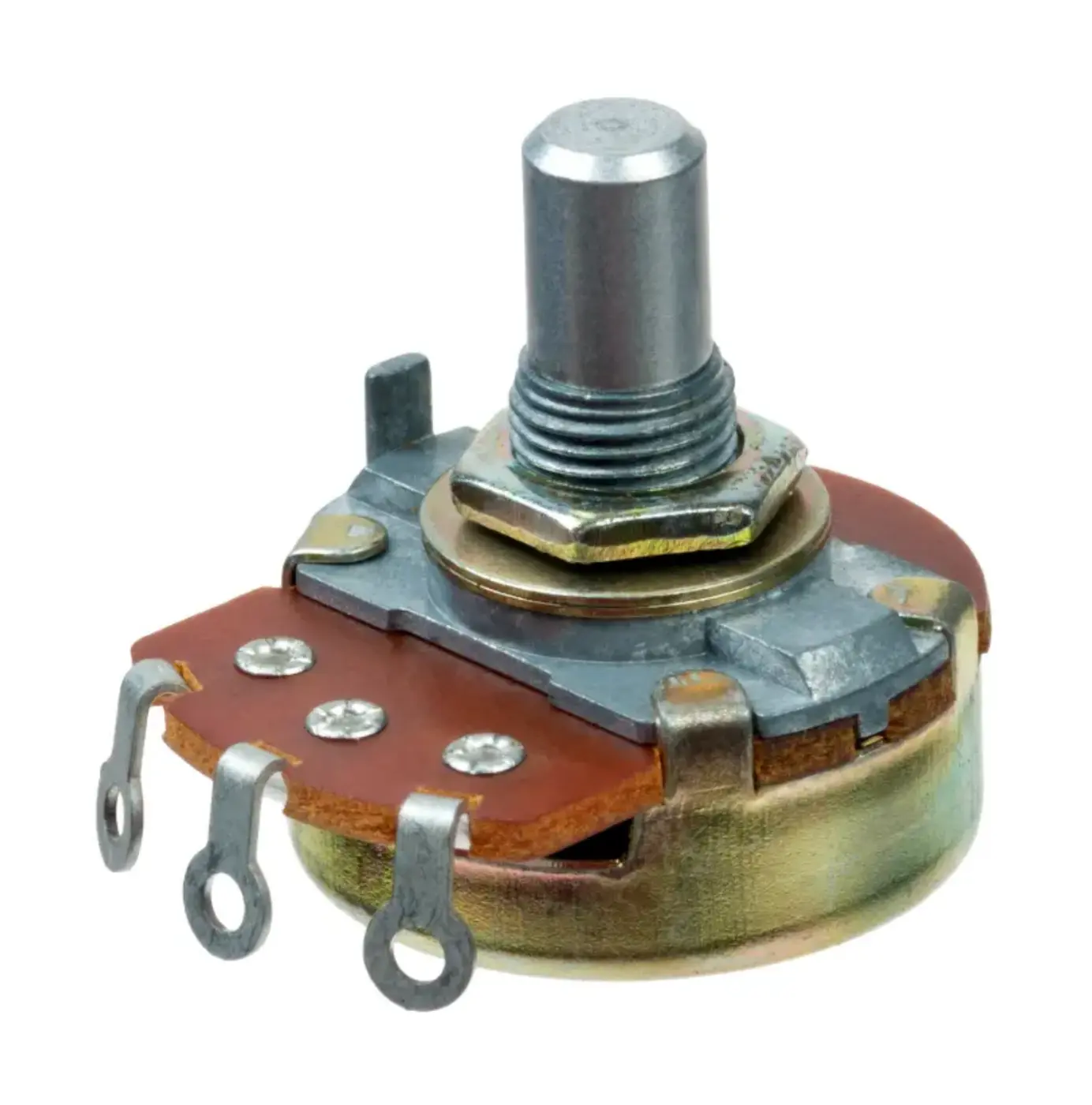Potentiometer Symbol, Function, and Applications
What is the Potentiometer Symbol?
Author: David Marriott, Spectra Symbol CEO
The electrical symbol for potentiometer varies slightly by region. In both American and European standards, the potentiometer circuit symbolincludes a resistor symbol with an arrow that points to the resistive path, indicating the a variable resistor. When examining thepotentiometer schematic symbol or potentiometer wiring diagram, you’ll typically see this symbol along with connections to the power source and load.


Symbol Markings on Devices
Potentiometers often have specific symbols and codes that indicate theirresistance values and taper types. Typically, these devices are marked directly with an exact resistance value—for instance, "1K" for a 1,000-ohm potentiometer. In some cases, a three-digit code is used, where the first two digits indicate the base value, and the third digit represents a multiplier to determine the total resistance.
Additionally, potentiometers use letter codes to signify their taper type, which refers to how the resistance changes with actuation (rotation or linear). In the U.S. and much of Asia, potentiometers with a logarithmic taper are marked with an "A," while linear taper types are marked "B," and reverse logarithmic types "C." However, European manufacturers often reverse these symbols, using "A" for linear and "B" for logarithmic. Understanding these markings is crucial for selecting the right potentiometer for your application, as the taper type directly affects the device’s performance in a circuit.
Spectra Symbol CEO: Potentiometer Symbol Explanation + Live Demonstration
What is a Potentiometer?




A potentiometer is a variable resistor used to adjust resistance in a circuit and is a crucial part of many electrical circuits. There are many types of potentiometers and they are often called a “pot” for short. They are usually categorized as either rotary or linear potentiometers. They both work in the same way but have different shapes.
How Does a Potentiometer Work?
Rotary Potentiometer

Linear Potentiometer

A potentiometer is essentially a three-terminal resistor with a sliding contact, known as the "wiper." When the wiper is adjusted along the resistive track, the resistance between the terminals changes, effectively altering the output voltage. In a potentiometer wiring diagram or potentiometer circuit symbol, this wiper is represented by an arrow, indicating its adjustable nature.
The two main types of potentiometers—linear and rotary—operate based on the same principle, with a resistive element and a wiper. In a linear potentiometer, the wiper moves in a straight line, and the resistance changes linearly with the position of the wiper. In contrast, a rotary potentiometer has a circular track, and the wiper rotates around it. These two types are often represented differently in diagrams.
Common Applications of Potentiometers
Potentiometers are extremely versatile and are found in many applications requiring an adjustable control of electrical signals. Below are some common applications for potentiometers. For a comprehensive understanding of how our sensors are used in different industries see our use cases report here.
- Volume and Tone Control: In audio equipment, potentiometers are often used to control volume, tone, and other sound qualities. Rotary potentiometers are frequently used in these applications due to their intuitive rotational adjustment.
- Linear Position Sensors: Linear potentiometers are commonly used as linear position sensors in automation and robotics. They provide accurate feedback on the position of an object, which is vital for controlling movement in machinery and robotic arms.
- Voltage Dividers: Potentiometers are commonly configured as voltage dividers in circuits. This application is particularly useful in devices where precise voltage adjustments are needed, such as tuning circuits in radio transmitters.
User Interfaces: Many user interfaces incorporate potentiometers to allow people to adjust settings like speed, brightness, or resistance. For example, potentiometers are often used in thermostats, dimmers, and various instrument panels.
What Kind of Potentiometer Do I Need?
Potentiometers are extremely versatile and are found in a wide range of applications. Knowing where to start can be difficult, but the team at SpectraSymbol is here to help. Please reach out to us with any questions you have so you can get the right potentiometer for your needs.